Perhaps consider
Place the new database into the assets folder suitable for a new install of the App so the createFromAsset would copy this version 2 database for a new install.
In the migration copy the asset to a the database folder with a different database name.
in the migration create the new tables.
still in the migration, for each new table, extract all of the data from the differently named new database then use the Cursor to insert the data into the existing database.
still in the migration, close the differently name database and delete the file.
Here's the migration code for something along those lines (no schema change, just new pre-populated data) and it's Kotlin not Java from a recent answer:-
val migration1_2 = object: Migration(1,2) {
val assetFileName = "appdatabase.db"
val tempDBName = "temp_" + assetFileName
val bufferSize = 1024 * 4
@SuppressLint("Range")
override fun migrate(database: SupportSQLiteDatabase) {
val asset = contextPassed?.assets?.open(assetFileName) /* Get the asset as an InputStream */
val tempDBPath = contextPassed?.getDatabasePath(tempDBName) /* Deduce the file name to copy the database to */
val os = tempDBPath?.outputStream() /* and get an OutputStream for the new version database */
/* Copy the asset to the respective file (OutputStream) */
val buffer = ByteArray(bufferSize)
while (asset!!.read(buffer,0,bufferSize) > 0) {
os!!.write(buffer)
}
/* Flush and close the newly created database file */
os!!.flush()
os.close()
/* Close the asset inputStream */
asset.close()
/* Open the new database */
val version2db = SQLiteDatabase.openDatabase(tempDBPath.path,null,SQLiteDatabase.OPEN_READONLY)
/* Grab all of the supplied rows */
val v2csr = version2db.rawQuery("SELECT * FROM user WHERE userId < ${User.USER_DEMARCATION}",null)
/* Insert into the actual database ignoring duplicates (by userId) */
while (v2csr.moveToNext()) {
database.execSQL("INSERT OR IGNORE INTO user VALUES(${v2csr.getLong(v2csr.getColumnIndex("userId"))},'${v2csr.getString(v2csr.getColumnIndex("userName"))}')",)
}
/* close cursor and the newly created database */
v2csr.close()
version2db.close()
tempDBPath.delete() /* Delete the temporary database file */
}
}
Note when testing the above code. I initially tried ATTACH'ing the new (temp) database. This worked and copied the data BUT either the ATTACH or DETACH (or both) prematurely ended the transaction that the migration runs in, resulting in Room failing to then open the database and a resultant exception.
- If this wasn't so then with the new database attached a simple
INSERT INTO main.the_table SELECT * FROM the_attached_schema_name.the_table; could have been used instead of using the cursor as the go-between.
without writing tons and tons of INSERT and CREATE TABLE statements
INSERT dealt with above.
The CREATE SQL could, in a similar way, be extracted from the new asset database, by using:-
`SELECT name,sql FROM sqlite_master WHERE type = 'table' AND name in (a_csv_of_the_table_names (enclosed in single quotes))`
e.g. SELECT name,sql FROM sqlite_master WHERE type = 'table' AND name IN ('viewLog','message');;
results in (for an arbitrary database used to demonstrate) :-
- name is the name of the table and sql then sql that was used to create the tables.
- alternately the SQL to create the tables can be found after compiling in the generated java (visible from the Android View) in the class that has the same name as the class annotated with @Database but suffixed with _Impl. There will be a method called createAlltables which has the SQL to create all the tables (and other items) e.g. (again just an arbitrary example) :-

- note the red stricken-through lines are for the room_master table, ROOM creates this and it is not required in the asset (it's what room uses to check to see if the schema has been changed)
Working Example
Version 1 (preparing for the migration to Version 2)
The following is a working example. Under Version 1 a single table named original (entity OriginalEnity) with data (5 rows) via a pre-populated database is used, a row is then added to reflect user suplied/input dat. When the App runs the contents of the table are extracted and written to the log :-
D/DBINFOoriginal: Name is name1 ID is 1 - DB Version is 1
D/DBINFOoriginal: Name is name2 ID is 2 - DB Version is 1
D/DBINFOoriginal: Name is name3 ID is 3 - DB Version is 1
D/DBINFOoriginal: Name is name4 ID is 4 - DB Version is 1
D/DBINFOoriginal: Name is name5 ID is 5 - DB Version is 1
D/DBINFOoriginal: Name is App User Data ID is 6 - DB Version is 1
Database Inspector showing :-
Version 2
The 3 new Entities/Tables added (newEntity1,2 and 3 table names new1, new2 and new3 respectively) same basic structure.
After creating the Entities and compiling the SQL, as per the createAlltables method in the java generated was extracted from the TheDatabase_Impl class (including the 3 additional indexes) :-
This SQL was then used in the SQLite tool to create the new tables and populate them with some data :-
/* FOR VERSION 2 */
/* Create statments copied from TheDatabase_Impl */
DROP TABLE IF EXISTS new1;
DROP TABLE IF EXISTS new2;
DROP TABLE IF EXISTS new3;
CREATE TABLE IF NOT EXISTS `new1` (`new1_id` INTEGER, `new1_name` TEXT, PRIMARY KEY(`new1_id`));
CREATE INDEX IF NOT EXISTS `index_new1_new1_name` ON `new1` (`new1_name`);
CREATE TABLE IF NOT EXISTS `new2` (`new2_id` INTEGER, `new2_name` TEXT, PRIMARY KEY(`new2_id`));
CREATE INDEX IF NOT EXISTS `index_new2_new2_name` ON `new2` (`new2_name`);
CREATE TABLE IF NOT EXISTS `new3` (`new3_id` INTEGER, `new3_name` TEXT, PRIMARY KEY(`new3_id`));
CREATE INDEX IF NOT EXISTS `index_new3_new3_name` ON `new3` (`new3_name`);
INSERT OR IGNORE INTO new1 (new1_name) VALUES ('new1_name1'),('new1_name2');
INSERT OR IGNORE INTO new2 (new2_name) VALUES ('new2_name1'),('new2_name2');
INSERT OR IGNORE INTO new3 (new3_name) VALUES ('new3_name1'),('new3_name2');
The database saved and copied into the assets folder (original renamed) :-

Then the Migration code (full database helper), which :-
- is driven simply by a String[] of the table names
- copies the asset (new database) an opens it via the SQLite API
- creates the tables, indexes and triggers according to the asset (must match the schema generated by room (hence copying sql from generated java previously))
- it does this by extracting the respective SQL from the sqlite_master table
- populates the newly created Room tables by extracting the data from the asset database into a Cursor and then inserting into the Room database (not the most efficient way BUT Room runs the Migration in a transaction)
is:-
@Database(entities = {
OriginalEntity.class, /* on it's own for V1 */
/* ADDED NEW TABLES FOR V2 */NewEntity1.class,NewEntity2.class,NewEntity3.class
},
version = TheDatabase.DATABASE_VERSION,
exportSchema = false
)
abstract class TheDatabase extends RoomDatabase {
public static final String DATABASE_NAME = "thedatabase.db";
public static final int DATABASE_VERSION = 2; //<<<<<<<<<< changed */
abstract AllDao getAllDao();
private static volatile TheDatabase instance = null;
private static Context currentContext;
public static TheDatabase getInstance(Context context) {
currentContext = context;
if (instance == null) {
instance = Room.databaseBuilder(context, TheDatabase.class, DATABASE_NAME)
.allowMainThreadQueries() /* for convenience run on main thread */
.createFromAsset(DATABASE_NAME)
.addMigrations(migration1_2)
.build();
}
return instance;
}
static Migration migration1_2 = new Migration(1, 2) {
@Override
public void migrate(@NonNull SupportSQLiteDatabase database) {
/* Copy the asset into the database folder (with different name) */
File assetDBFile = getNewAssetDatabase(currentContext,DATABASE_NAME);
/* Open the assetdatabase */
SQLiteDatabase assetDB = SQLiteDatabase.openDatabase(assetDBFile.getPath(),null,SQLiteDatabase.OPEN_READWRITE);
/* Build (create and populate) the new ROOM tables and indexes from the asset database */
buildNewTables(
new String[]{
NewEntity1.TABLE_NAME,
NewEntity2.TABLE_NAME,
NewEntity3.TABLE_NAME},
database /* ROOM DATABASE */,
assetDB /* The copied and opened asset database as an SQliteDatabase */
);
/* done with the asset database */
assetDB.close();
assetDBFile.delete();
}
};
private static void buildNewTables(String[] tablesToBuild, SupportSQLiteDatabase actualDB, SQLiteDatabase assetDB) {
StringBuilder args = new StringBuilder();
boolean afterFirst = false;
for (String tableName: tablesToBuild) {
if (afterFirst) {
args.append(",");
}
afterFirst = true;
args.append("'").append(tableName).append("'");
}
/* Get SQL for anything related to the table (table, index, trigger) to the tables and build it */
/* !!!!WARNING!!!! NOT TESTED VIEWS */
/* !!!!WARNING!!!! may not cope with Foreign keys as conflicts could occur */
Cursor csr = assetDB.query(
"sqlite_master",
new String[]{"name","sql", "CASE WHEN type = 'table' THEN 1 WHEN type = 'index' THEN 3 ELSE 2 END AS sort"},
"tbl_name IN (" + args.toString() + ")",
null,
null,null, "sort"
);
while (csr.moveToNext()) {
Log.d("CREATEINFO","executing SQL:- " + csr.getString(csr.getColumnIndex("sql")));
actualDB.execSQL(csr.getString(csr.getColumnIndex("sql")));
}
/* Populate the tables */
/* !!!!WARNING!!!! may not cope with Foreign keys as conflicts could occur */
/* no set order for the tables so a child table may not be loaded before it's parent(s) */
ContentValues cv = new ContentValues();
for (String tableName: tablesToBuild) {
csr = assetDB.query(tableName,null,null,null,null,null,null);
while (csr.moveToNext()) {
cv.clear();
for (String columnName: csr.getColumnNames()) {
cv.put(columnName,csr.getString(csr.getColumnIndex(columnName)));
actualDB.insert(tableName, OnConflictStrategy.IGNORE,cv);
}
}
}
csr.close();
}
private static File getNewAssetDatabase(Context context, String assetDatabaseFileName) {
String tempDBPrefix = "temp_";
int bufferSize = 1024 * 8;
byte[] buffer = new byte[bufferSize];
File assetDatabase = context.getDatabasePath(tempDBPrefix+DATABASE_NAME);
InputStream assetIn;
OutputStream assetOut;
/* Delete the AssetDatabase (temp DB) if it exists */
if (assetDatabase.exists()) {
assetDatabase.delete(); /* should not exist but just in case */
}
/* Just in case the databases folder (data/data/packagename/databases)
doesn't exist create it
This should never be the case as Room DB uses it
*/
if (!assetDatabase.getParentFile().exists()) {
assetDatabase.mkdirs();
}
try {
assetIn = context.getAssets().open(assetDatabaseFileName);
assetOut = new FileOutputStream(assetDatabase);
while(assetIn.read(buffer) > 0) {
assetOut.write(buffer);
}
assetOut.flush();
assetOut.close();
assetIn.close();
} catch (IOException e) {
e.printStackTrace();
throw new RuntimeException("Error retrieving Asset Database from asset " + assetDatabaseFileName);
}
return assetDatabase;
}
}
The code in the Activity is :-
public class MainActivity extends AppCompatActivity {
TheDatabase db;
AllDao dao;
private static final String TAG = "DBINFO";
@Override
protected void onCreate(Bundle savedInstanceState) {
super.onCreate(savedInstanceState);
setContentView(R.layout.activity_main);
/* Original */
db = TheDatabase.getInstance(this);
dao = db.getAllDao();
OriginalEntity newOE = new OriginalEntity();
newOE.name = "App User Data";
dao.insert(newOE);
for(OriginalEntity o: dao.getAll()) {
Log.d(TAG+OriginalEntity.TABLE_NAME,"Name is " + o.name + " ID is " + o.id + " - DB Version is " + TheDatabase.DATABASE_VERSION);
}
/* Added for V2 */
for (NewEntity1 n: dao.getAllNewEntity1s()) {
Log.d(TAG+NewEntity1.TABLE_NAME,"Names is " + n.name + " ID is " + n.id + " - DB Version is " + TheDatabase.DATABASE_VERSION);
}
for (NewEntity2 n: dao.getAllNewEntity2s()) {
Log.d(TAG+NewEntity2.TABLE_NAME,"Names is " + n.name + " ID is " + n.id + " - DB Version is " + TheDatabase.DATABASE_VERSION);
}
for (NewEntity3 n: dao.getAllNewEntity3s()) {
Log.d(TAG+NewEntity3.TABLE_NAME,"Names is " + n.name + " ID is " + n.id + " - DB Version is " + TheDatabase.DATABASE_VERSION);
}
}
}
- see Version 1 section and comments in the code for V1 run.
- The resultant output to the log for the V2 run (initial) is
:-
2021-10-11 13:02:50.939 D/CREATEINFO: executing SQL:- CREATE TABLE `new1` (`new1_id` INTEGER, `new1_name` TEXT, PRIMARY KEY(`new1_id`))
2021-10-11 13:02:50.941 D/CREATEINFO: executing SQL:- CREATE TABLE `new2` (`new2_id` INTEGER, `new2_name` TEXT, PRIMARY KEY(`new2_id`))
2021-10-11 13:02:50.942 D/CREATEINFO: executing SQL:- CREATE TABLE `new3` (`new3_id` INTEGER, `new3_name` TEXT, PRIMARY KEY(`new3_id`))
2021-10-11 13:02:50.942 D/CREATEINFO: executing SQL:- CREATE INDEX `index_new1_new1_name` ON `new1` (`new1_name`)
2021-10-11 13:02:50.943 D/CREATEINFO: executing SQL:- CREATE INDEX `index_new2_new2_name` ON `new2` (`new2_name`)
2021-10-11 13:02:50.944 D/CREATEINFO: executing SQL:- CREATE INDEX `index_new3_new3_name` ON `new3` (`new3_name`)
2021-10-11 13:02:51.006 D/DBINFOoriginal: Name is name1 ID is 1 - DB Version is 2
2021-10-11 13:02:51.006 D/DBINFOoriginal: Name is name2 ID is 2 - DB Version is 2
2021-10-11 13:02:51.006 D/DBINFOoriginal: Name is name3 ID is 3 - DB Version is 2
2021-10-11 13:02:51.006 D/DBINFOoriginal: Name is name4 ID is 4 - DB Version is 2
2021-10-11 13:02:51.006 D/DBINFOoriginal: Name is name5 ID is 5 - DB Version is 2
2021-10-11 13:02:51.006 D/DBINFOoriginal: Name is App User Data ID is 6 - DB Version is 2
2021-10-11 13:02:51.006 D/DBINFOoriginal: Name is App User Data ID is 7 - DB Version is 2
2021-10-11 13:02:51.010 D/DBINFOnew1: Names is new1_name1 ID is 1 - DB Version is 2
2021-10-11 13:02:51.010 D/DBINFOnew1: Names is new1_name2 ID is 2 - DB Version is 2
2021-10-11 13:02:51.012 D/DBINFOnew2: Names is new2_name1 ID is 1 - DB Version is 2
2021-10-11 13:02:51.012 D/DBINFOnew2: Names is new2_name2 ID is 2 - DB Version is 2
2021-10-11 13:02:51.013 D/DBINFOnew3: Names is new3_name1 ID is 1 - DB Version is 2
2021-10-11 13:02:51.013 D/DBINFOnew3: Names is new3_name2 ID is 2 - DB Version is 2
- Note that the user data has been retained (1st App User Data ...., 2nd is added when the activity is run).
The Dao (AllDao) is :-
@Dao
abstract class AllDao {
/* Original Version 1 Dao's */
@Insert(onConflict = OnConflictStrategy.IGNORE)
abstract long insert(OriginalEntity originalEntity);
@Insert(onConflict = OnConflictStrategy.IGNORE)
abstract long[] insert(OriginalEntity ... originalEntities);
@Query("SELECT * FROM original")
abstract List<OriginalEntity> getAll();
/* New Version 2 Dao's */
@Insert(onConflict = OnConflictStrategy.IGNORE)
abstract long insert(NewEntity1 newEntity1);
@Insert(onConflict = OnConflictStrategy.IGNORE)
abstract long insert(NewEntity2 newEntity2);
@Insert(onConflict = OnConflictStrategy.IGNORE)
abstract long insert(NewEntity3 newEntity3);
@Query("SELECT * FROM " + NewEntity1.TABLE_NAME)
abstract List<NewEntity1> getAllNewEntity1s();
@Query("SELECT * FROM " + NewEntity2.TABLE_NAME)
abstract List<NewEntity2> getAllNewEntity2s();
@Query("SELECT * FROM " + NewEntity3.TABLE_NAME)
abstract List<NewEntity3> getAllNewEntity3s();
}
The Entities are :-
@Entity(tableName = OriginalEntity.TABLE_NAME)
class OriginalEntity {
public static final String TABLE_NAME = "original";
public static final String COL_ID = TABLE_NAME +"_id";
public static final String COL_NAME = TABLE_NAME + "_name";
@PrimaryKey
@ColumnInfo(name = COL_ID)
Long id = null;
@ColumnInfo(name = COL_NAME, index = true)
String name;
}
and for V2 :-
@Entity(tableName = NewEntity1.TABLE_NAME)
class NewEntity1 {
public static final String TABLE_NAME = "new1";
public static final String COl_ID = TABLE_NAME + "_id";
public static final String COL_NAME = TABLE_NAME + "_name";
@PrimaryKey
@ColumnInfo(name = COl_ID)
Long id = null;
@ColumnInfo(name = COL_NAME, index = true)
String name;
}
and :-
@Entity(tableName = NewEntity2.TABLE_NAME)
class NewEntity2 {
public static final String TABLE_NAME = "new2";
public static final String COl_ID = TABLE_NAME + "_id";
public static final String COL_NAME = TABLE_NAME + "_name";
@PrimaryKey
@ColumnInfo(name = COl_ID)
Long id = null;
@ColumnInfo(name = COL_NAME, index = true)
String name;
}
and :-
@Entity(tableName = NewEntity3.TABLE_NAME)
class NewEntity3 {
public static final String TABLE_NAME = "new3";
public static final String COl_ID = TABLE_NAME + "_id";
public static final String COL_NAME = TABLE_NAME + "_name";
@PrimaryKey
@ColumnInfo(name = COl_ID)
Long id = null;
@ColumnInfo(name = COL_NAME, index = true)
String name;
}
Finally Test new App install (i.e. no Migration but created from asset)
When run the output to the log is (no user supplied/input data) :-
2021-10-11 13:42:48.272 D/DBINFOoriginal: Name is name1 ID is 1 - DB Version is 2
2021-10-11 13:42:48.272 D/DBINFOoriginal: Name is name2 ID is 2 - DB Version is 2
2021-10-11 13:42:48.272 D/DBINFOoriginal: Name is name3 ID is 3 - DB Version is 2
2021-10-11 13:42:48.272 D/DBINFOoriginal: Name is name4 ID is 4 - DB Version is 2
2021-10-11 13:42:48.272 D/DBINFOoriginal: Name is name5 ID is 5 - DB Version is 2
2021-10-11 13:42:48.272 D/DBINFOoriginal: Name is App User Data ID is 6 - DB Version is 2
2021-10-11 13:42:48.275 D/DBINFOnew1: Names is new1_name1 ID is 1 - DB Version is 2
2021-10-11 13:42:48.275 D/DBINFOnew1: Names is new1_name2 ID is 2 - DB Version is 2
2021-10-11 13:42:48.276 D/DBINFOnew2: Names is new2_name1 ID is 1 - DB Version is 2
2021-10-11 13:42:48.276 D/DBINFOnew2: Names is new2_name2 ID is 2 - DB Version is 2
2021-10-11 13:42:48.277 D/DBINFOnew3: Names is new3_name1 ID is 1 - DB Version is 2
2021-10-11 13:42:48.277 D/DBINFOnew3: Names is new3_name2 ID is 2 - DB Version is 2
Note
Room encloses names of items (tables, columns) in grave accents's, This makes invalid column names valid e.g 1 not enclosed is invalid 1 enclosed is valid. Use of otherwise invalid names may, although I suspect not, cause issues (I haven't tested this aspect). SQLite itself strips the grave accents when storing the name e.g :-
CREATE TABLE IF NOT EXISTS `testit` (`1`);
SELECT * FROM sqlite_master WHERE name = 'testit';
SELECT * FROM testit;
results in :-
- i.e. the grave accents are kept when the SQL is stored, hence the generated CREATE's are safe.
and :-
i.e. the grave accents have been stripped and the column is named just 1, which may cause an issue (but likely not) when traversing the columns in the cursor.






